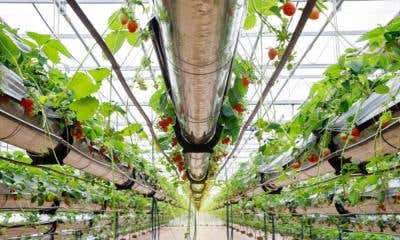Light Adjustments for Cannabis Cultivars
-
Light Spectrum: Different cultivars may have varying responses to different light spectra. Research the specific light preferences of each cultivar and adjust the lighting system accordingly. Some cultivars may thrive with a full-spectrum light, while others may benefit from specific light spectrums, such as red or blue light.
-
Light Intensity: Light intensity requirements can vary among cannabis cultivars. Monitor the light intensity within the growing area using a light meter and adjust the distance between the plants and the light source accordingly. Some cultivars may require higher light intensities for optimal growth and flowering, while others may be more sensitive to intense light and thrive under lower intensity levels.
-
Photoperiod: Cannabis cultivars have different photoperiodic responses, meaning they have varying requirements for the duration of light and dark periods. Adjust the light cycle based on the specific needs of each cultivar during the vegetative and flowering stages. Some cultivars may require longer or shorter photoperiods to initiate flowering and complete their life cycle.
-
Light Distribution: Ensure that light is evenly distributed throughout the canopy to promote uniform growth and prevent shading. Proper spacing, plant training techniques, and light placement can help achieve balanced light distribution and prevent light-related issues, such as excessive stretching or light burn.
Temperature Adjustments for Cannabis Cultivars
-
Optimal Temperature Range: Different cultivars have different temperature preferences. Research the ideal temperature range for each cultivar during the vegetative and flowering stages. Generally, cannabis cultivars thrive within a range of 20-28°C (68-82°F) during the day, with slightly cooler temperatures at night.
-
Temperature Fluctuations: Minimize temperature fluctuations as they can stress cannabis plants. Maintain a stable temperature environment within the preferred range for each cultivar. Sudden temperature swings can negatively impact growth, flowering, and overall plant health.
-
Nighttime Temperature Drop: Some cannabis cultivars benefit from a slight temperature drop during the nighttime period. This drop can help induce certain physiological processes and promote flower development. Adjust the nighttime temperatures accordingly based on the cultivar's requirements.
-
Root Zone Temperature: Consider the temperature of the root zone as well. Proper insulation, heating mats, or cooling systems can help maintain optimal root zone temperatures, ensuring healthy root development and nutrient uptake.
Monitoring and Adjustments for Cannabis Cultivars
-
Observation and Data Collection: Regularly observe the growth, health, and response of different cannabis cultivars to the light and temperature conditions provided. Keep detailed records of any changes or adjustments made, as well as the resulting plant responses.
-
Fine-tuning Techniques: Fine-tune the light and temperature adjustments based on the specific needs and feedback from each cultivar. Observe how cultivars respond to different environmental changes and make gradual adjustments to optimize their growth and performance.
-
Research and Cultivar-Specific Knowledge: Continually educate yourself about the specific requirements and characteristics of the cannabis cultivars you are growing. Stay up to date with cultivar-specific research and breeding advancements to better understand their individual needs and adapt your cultivation practices accordingly.
By adjusting the light and temperature conditions to suit the specific requirements of different cannabis cultivars, growers can optimize their cultivation practices and achieve the best possible outcomes. Remember to closely monitor the plants, make data-driven adjustments, and stay knowledgeable about the unique traits of each cultivar in order to cultivate healthy and thriving cannabis crops.
















